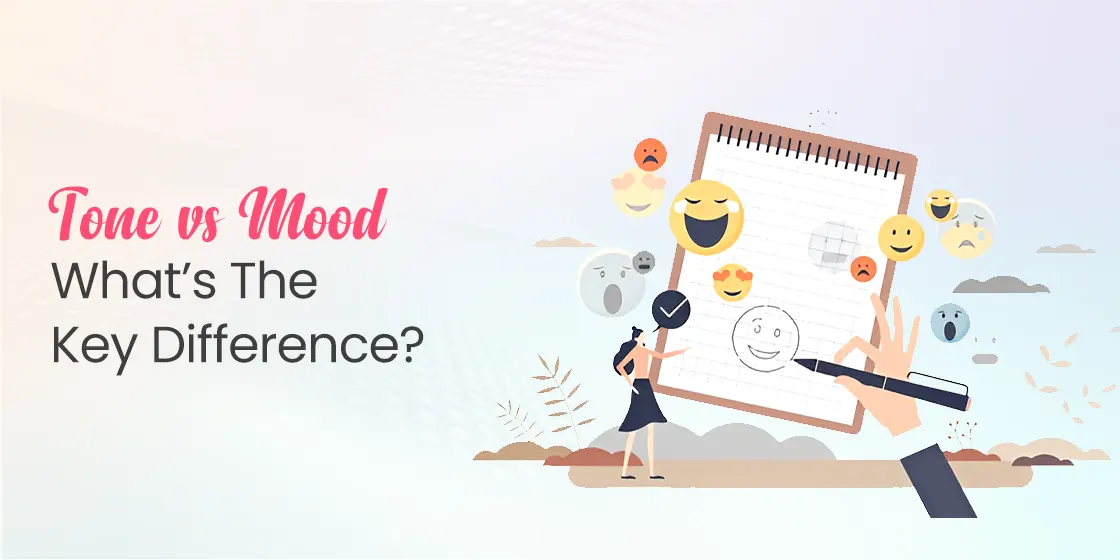Table of Content
Discover How Unsatisfied vs. Dissatisfied Differ in Their Meanings and Usage
In the context of the English language, expressing a lack of satisfaction can take various forms, each carrying subtle yet distinct implications. While both unsatisfied vs. dissatisfied convey a sense of not being pleased or fulfilled, their origins, connotations, and typical usage scenarios differ in ways that can impact the clarity and precision of communication.
Choosing between these seemingly interchangeable words requires an understanding of their underlying structures and the subtle shades of meaning they convey. Mastering this distinction allows for a more articulate and accurate expression of feelings ranging from a simple lack of fulfillment to a more pronounced state of displeasure or grievance.
In this article, we will dive into the intricacies of “unsatisfied” and “dissatisfied,” exploring their etymological roots and the role of prefixes in shaping their meanings. We will explore how these words are used by English web copywriting services to communicate a lack of satisfaction, providing clear definitions and illustrative examples for each.
Moreover, we will also highlight the subtle differences in their connotations and the specific contexts in which one might be more appropriate than the other. By understanding these distinctions, individuals can enhance their vocabulary and communicate their lack of satisfaction with greater accuracy and impact, thus ensuring their message is clearly understood. Let’s begin.
The Importance of Prefixes in English, and Their Effect on the Meanings of Words

Prefixes, those short but powerful word parts added to the beginning of a base word, play a crucial role in the English language by significantly altering or modifying the original meaning. These linguistic building blocks allow for the creation of new words with related but distinct senses, often providing a more concise and efficient way to express complex ideas.
Understanding the common prefixes and their associated meanings is fundamental to deciphering the nuances of vocabulary and enhancing comprehension. Prefixes can indicate negation, direction, quantity, time, or manner, among other things, effectively expanding the semantic range of root words. Thus, we can say that it is an essential element of UX copywriting.
The prefixes “un-” and “dis-” are particularly relevant when discussing words expressing a lack of something, as they both commonly function as negative prefixes. However, while both convey a sense of “not,” they often carry subtle differences in implication and usage. “Un-” is generally used to indicate a simple negation or the absence of a quality. For instance, “happy” becomes “unhappy” (not happy), “kind” becomes “unkind” (not kind), and “aware” becomes “unaware” (not aware). The prefix “un-” often suggests a state that is the opposite of the base word or a lack of a particular condition.
On the other hand, the prefix “dis-” often carries a stronger connotation of opposition, reversal, or a negative judgment. It can imply a sense of displeasure, disapproval, or a breakdown of a positive state. Examples include “agree” becoming “disagree” (to have a different opinion), “approve” becoming “disapprove” (to have an unfavorable opinion), and “connect” becoming “disconnect” (to break a connection).
The presence of “dis-” often suggests a more active or pronounced state of negativity compared to the simple absence implied by “un-.” Recognizing this subtle distinction between “un-” and “dis-” is key to understanding the difference in nuance between words like “unsatisfied” and “dissatisfied.”
How Can You Communicate You Are Not Satisfied, in the English Language?
Expressing a lack of satisfaction in English can be achieved through a variety of words and phrases, each carrying its own level of intensity and specific connotation. Beyond the direct use of “unsatisfied” and “dissatisfied,” the language offers a rich spectrum of options to convey feelings ranging from mild disappointment to strong displeasure. The choice of expression often depends on the context, the relationship with the person or situation causing the dissatisfaction, and the desired level of emphasis.
For milder forms of not being satisfied, one might use words like “disappointed,” “not pleased,” “not happy,” or “underwhelmed.” These terms suggest a feeling that expectations were not met, but perhaps without a strong sense of grievance or negativity. Phrases like “I was hoping for more,” “It didn’t quite meet my expectations,” or “I wasn’t entirely thrilled” can also convey a similar sentiment in a more indirect manner. The level of formality and the specific situation will often dictate which of these expressions is most appropriate.
To express a stronger sense of not being satisfied, often involving displeasure or a feeling that something is wrong, words like “frustrated,” “annoyed,” “discontented,” or “aggrieved” might be used. These terms carry a more negative emotional weight and suggest a greater level of unhappiness with the situation. Phrases such as “I’m not at all happy with this,” “This is unacceptable,” or “I have serious concerns” can convey a more forceful expression of dissatisfaction.
Understanding this allows for a more precise and impactful communication of one’s feelings in brand copywriting when expectations are not met or when there is a genuine cause for complaint. The choice between “unsatisfied” and “dissatisfied” often falls within this spectrum, with “dissatisfied” typically carrying a slightly stronger negative connotation.
What Does Unsatisfied Mean?

The word “unsatisfied” is formed by adding the negative prefix “un-” to the adjective “satisfied.” Consequently, “unsatisfied” primarily means “not satisfied” or “not having received what was expected or desired.” It often describes a state of incompleteness, a lack of fulfillment, or a feeling that a particular need or expectation has not been met. The emphasis of “unsatisfied” tends to be on the absence of satisfaction rather than a strong negative reaction or displeasure.
“Unsatisfied” can be used in various contexts. For example, one might feel “unsatisfied” after a meal that was not filling enough, indicating a lack of physical satiation. Similarly, a customer might be “unsatisfied” with a product that did not perform as advertised, suggesting that their expectations for the product’s functionality were not met. In a more abstract sense, someone might feel “unsatisfied” with their career if they do not feel a sense of purpose or fulfillment in their work, indicating a lack of emotional or intellectual gratification. In these instances, “unsatisfied” highlights a state of not having achieved a desired level of contentment or fulfillment.
The nuance of “unsatisfied” often lies in its implication of an unmet need or expectation without necessarily conveying strong negative emotions like anger or resentment. It suggests a state of “not enough” or “not quite right.” For instance, if a student receives a B+ grade, they might be “unsatisfied” if their expectation was an A, but this doesn’t necessarily mean they are angry or deeply displeased. They simply haven’t reached their desired outcome. Therefore, “unsatisfied” often describes a gap between what was hoped for or needed and what was actually received or experienced.
What Does Dissatisfied Represent?

The word “dissatisfied” is formed by adding the negative prefix “dis-” to the adjective “satisfied.” Unlike “unsatisfied,” “dissatisfied” typically carries a stronger connotation of displeasure, discontent, or even grievance. It suggests not only that expectations were not met but also that this failure has resulted in a feeling of unhappiness or annoyance. “Dissatisfied” often implies a more active negative reaction to a lack of satisfaction.
When someone is “dissatisfied,” it usually means there is a specific reason for their lack of contentment, often related to a perceived failing or inadequacy. For example, a customer might be “dissatisfied” with the poor service they received at a restaurant, indicating a negative reaction to the substandard experience. An employee might be “dissatisfied” with their working conditions, suggesting a feeling of unhappiness and perhaps a desire for change. In these cases, “dissatisfied” goes beyond a simple lack of fulfillment and implies a degree of negative feeling or judgment about the situation.
The prefix “dis-” in “dissatisfied” reinforces this stronger negative connotation, suggesting a sense of opposition to being satisfied or a breakdown of a positive state. It implies that the lack of satisfaction is significant enough to cause displeasure or discontent. While someone who is “unsatisfied” might simply feel that something is lacking, someone who is “dissatisfied” is more likely to feel a sense of disappointment or even resentment. Therefore, “dissatisfied” is a more potent term for expressing a lack of satisfaction that is accompanied by negative emotions or a critical judgment.
Unsatisfied Vs. Dissatisfied – A Comprehensive Comparison of the Two Terms
While both “unsatisfied” and “dissatisfied” indicate a lack of satisfaction, the key difference lies in the intensity and the underlying reasons for this lack of fulfillment. “Unsatisfied” generally denotes a neutral state of not having one’s needs or expectations met, often without a strong emotional reaction. In contrast, “dissatisfied” carries a stronger negative connotation, implying displeasure, or even a sense of grievance due to unmet expectations or a perceived failing, a distinct difference in digital copywriting.
Consider the scenario of a customer receiving a product that is functional but not exactly as described. They might feel “unsatisfied” because the product didn’t fully meet their expectations in terms of features or appearance. However, if the product is faulty or the customer receives rude service, they are more likely to feel “dissatisfied” due to the negative experience and the failure to meet a basic standard of quality or service. The level of negative emotion and the perceived severity of the unmet expectation are often the determining factors in choosing between these two words.
Another way to differentiate them is to consider the direct antonyms. The direct opposite of “satisfied” is “unsatisfied.” However, “dissatisfied” often implies a stronger sense of the opposite of being pleased or content. While one can be “unsatisfied” in a relatively neutral way, being “dissatisfied” typically suggests a more negative emotional state.
Therefore, when choosing between “unsatisfied” and “dissatisfied,” consider the degree of negativity you wish to convey. If it’s simply a matter of unmet expectations without strong negative feelings, “unsatisfied” might be more appropriate. If there is a sense of displeasure, disappointment, or grievance involved, “dissatisfied” is likely the more accurate and impactful choice.
FAQs
| Is dissatisfied a correct word? Yes, it is a correct word, and shows a strong negative connotation to not being satisfied, i-e holding a grievance that something is not up to par with their expectations. |
| What can be alternate words for unsatisfied? You can use disappointed or frustrated to portray a similar feeling to unsatisfied. |
| What can be a synonym for dissatisfied? Synonyms of dissatisfied include disappointed, disillusioned, or annoyed. |
Conclusion
The seemingly subtle distinction between “unsatisfied” and “dissatisfied” highlights the richness and precision of the English language. While both terms convey a lack of satisfaction, “unsatisfied” typically describes a more neutral state of unmet needs or expectations, often without strong negative emotions. It emphasizes the absence of fulfillment.
Conversely, “dissatisfied” carries a stronger negative connotation, implying displeasure, discontent, or even grievance resulting from unmet expectations or perceived inadequacies. Understanding the role of the prefixes “un-” and “dis-” further clarifies this difference, with “dis-” often signaling a more pronounced state of negativity.
By carefully considering the context and the specific nuance of feeling one wishes to express, individuals can choose between “unsatisfied” and “dissatisfied” to communicate their lack of satisfaction with greater accuracy and impact, ensuring their message resonates with the intended level of emotion and clarity.

Unleash your brand story`s potential with eContentSol – your creative writing companion. We craft narratives that captivate. Ready to elevate your content game? Dive into creativity with us and let`s bring your ideas to life.


